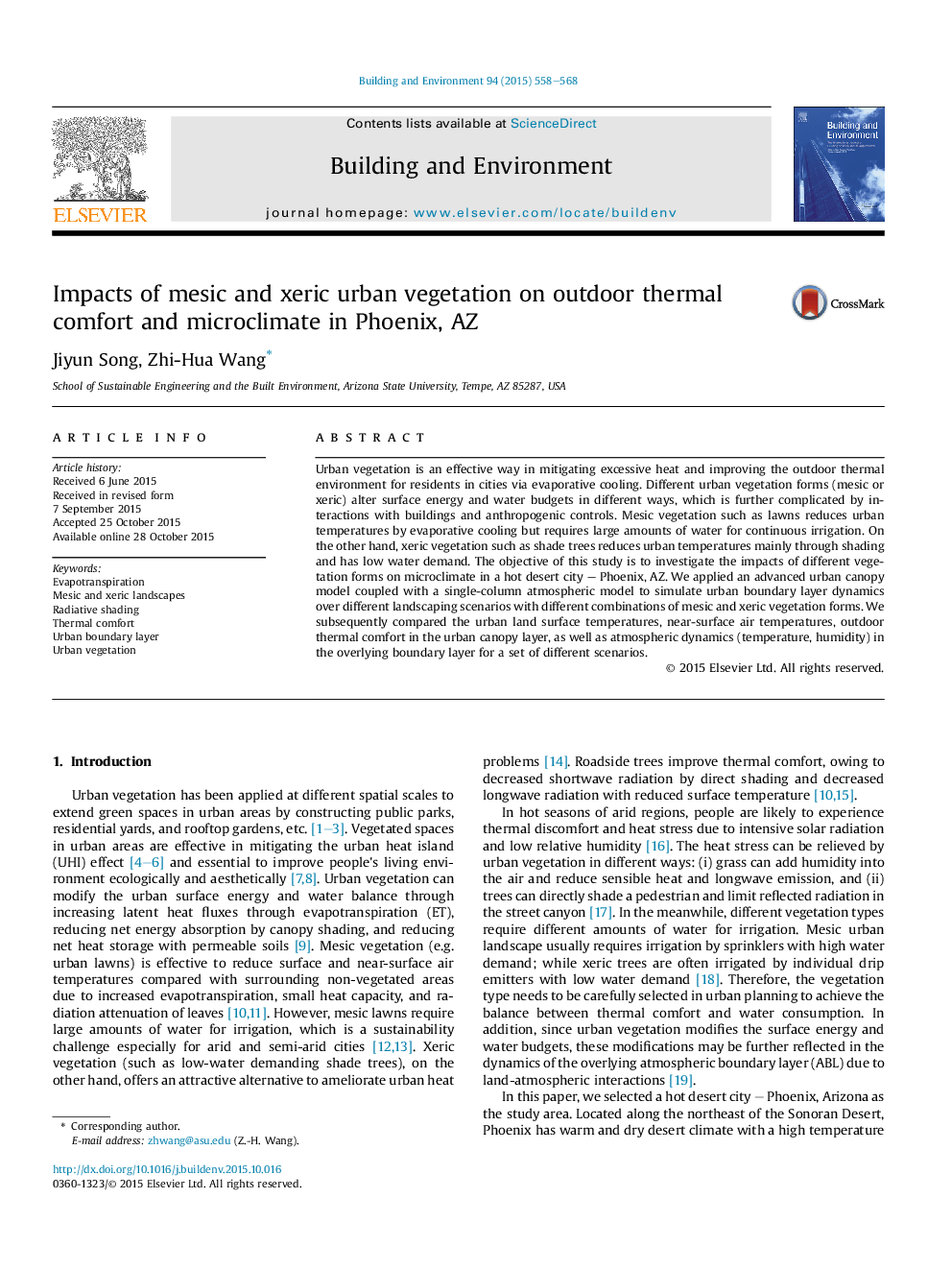| کد مقاله | کد نشریه | سال انتشار | مقاله انگلیسی | نسخه تمام متن |
|---|---|---|---|---|
| 247904 | 502533 | 2015 | 11 صفحه PDF | دانلود رایگان |

• Coupled urban land surface and atmospheric boundary-layer modeling framework.
• Impact of mesic and xeric urban landscapes is intercompared.
• Xeric shade trees provide an attractive means to improve urban thermal environment.
• Urban vegetation effectively modifies the overlying atmospheric dynamics.
Urban vegetation is an effective way in mitigating excessive heat and improving the outdoor thermal environment for residents in cities via evaporative cooling. Different urban vegetation forms (mesic or xeric) alter surface energy and water budgets in different ways, which is further complicated by interactions with buildings and anthropogenic controls. Mesic vegetation such as lawns reduces urban temperatures by evaporative cooling but requires large amounts of water for continuous irrigation. On the other hand, xeric vegetation such as shade trees reduces urban temperatures mainly through shading and has low water demand. The objective of this study is to investigate the impacts of different vegetation forms on microclimate in a hot desert city – Phoenix, AZ. We applied an advanced urban canopy model coupled with a single-column atmospheric model to simulate urban boundary layer dynamics over different landscaping scenarios with different combinations of mesic and xeric vegetation forms. We subsequently compared the urban land surface temperatures, near-surface air temperatures, outdoor thermal comfort in the urban canopy layer, as well as atmospheric dynamics (temperature, humidity) in the overlying boundary layer for a set of different scenarios.
Journal: Building and Environment - Volume 94, Part 2, December 2015, Pages 558–568